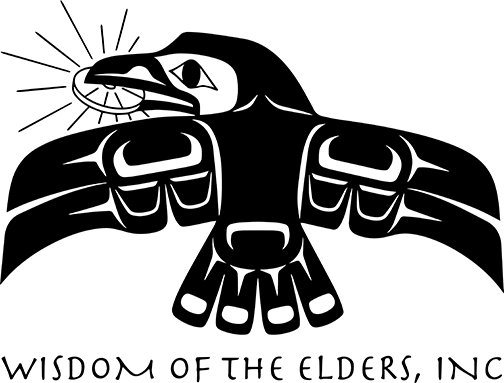Tony Johnson
with Bruce Crespin
Arlie Neskahi:
By the time of Lewis and Clark, Chinook people had long established their role as “middlemen” between tribes throughout the lower Columbia and Northwest Coast regions. Their prominence in trade was, in part, due to their skill as boatsmen and their superior watercraft: the Chinook canoe. Lewis and Clark were highly impressed with, in Clark’s words, these “butiful” canoes, and they secured one through barter at their first opportunity. Today in the Artists Circle, Bruce Crespin will focus on Chinook canoe carver and tribal linguist Tony Johnson, who discusses the fine art of marine engineering.
Tony Johnson:
My boys, my kids will be carvers. They will learn that because that will, just in the same way this language will, make them Chinooks. It makes them who they need to be.
Bruce Crespin:
Tony Johnson was born at Willapa Bay on the southernmost coast of Washington, near where his father and grandfather were also born. Tony’s great-grandmother was born up the Columbia River by Pillar Rock.
Johnson:
Local Native people are water people, lower Columbia River people, our style of canoe is Chinook style of canoe. T hese canoes had a multitude of uses. You would use it to pull a seine net. You’d use it to set your drift net. You’d ah, use it to take out to one of the bars to dig clams. Fill your canoe with clams. Take it home. You know, I mean, it was really used as a cargo vessel at times. It was used as a way to transport your whole family and maybe all your household goods.
Crespin:
Tony learned to make Chinook canoes by living and working with his father’s cousin, a coast Indian artist living in Seattle. There, he met other carvers who shared their knowledge with him.
Johnson:
I had never carved a canoe, in the sense of a canoe that was mine, start to finish, until the canoe that I carved for Fort Clatsop in Astoria. Carving that canoe was an incredible learning opportunity for me.
Crespin:
Chinook canoes are made from a single cedar log, harvested from blow-down. Designed for saltwater, the canoes are highly stylized. They are exquisitely crafted, and perform superbly in open water. The inside is hollowed out. Water is poured in to form a shallow pool. Hot rocks are added to make steam. The steam expands and reshapes the sides, which may be less than an inch thick in places. Crosspiece struts, known as thwarts are tied to the sides to maintain form and stability. The exterior is burned, burnished, and oiled, achieving a fine black finish, while the inside is painted red.
Johnson:
The stern and prow, or bow, of these canoes are carved separately and attached. So the stern piece is really a sort of small attachment that really looks, probably to anybody who hasn’t had to use it in the water, just as more of an artistic expression.
On the other hand, it really is meant to cut a trailing wave and to provide the lift that you need to pop up on top of a trailing wave. And the bow has forms attached to it. It’s a long protruding bow that again is the same thing. It’s about cutting, cutting into the water.
Every little detail of these canoes have a function. Again, it’s many thousands of years of refinement. Our ocean can get really wild. These canoes are truly ocean-going vessels. The forms that have appeared are really art-like in that, I think, anybody can look at our canoes and really appreciate them as an art object. On the other hand they are really refinements of, you know, maritime architecture in terms of being really functional for their purpose.
Crespin:
Tony has become an expert on carving Chinook canoes. He has acquired the sensibilities of his ancestors, and knows intimately the boats he carves. Tony makes tribal art and practices the Chinook language. He has centered his life around maintaining Chinook protocols and carrying on Chinook culture. He sees the world through Chinook eyes, where canoes are more than mere possessions or transportation.
Johnson:
People wore canoes out. Canoes have a lifespan. So our old cemeteries were full not only of dead people. They’re also full of dead canoes. We buried our people with things that were important to them. And our old cemeteries were full of canoes placed up on supports or in trees or however else we could elevate them above the ground. And inside of those canoes were individuals or multiple individuals from families. So, you know, they actually had a life after death also.
Crespin:
For Wisdom of the Elders, I’m Bruce Crespin.

